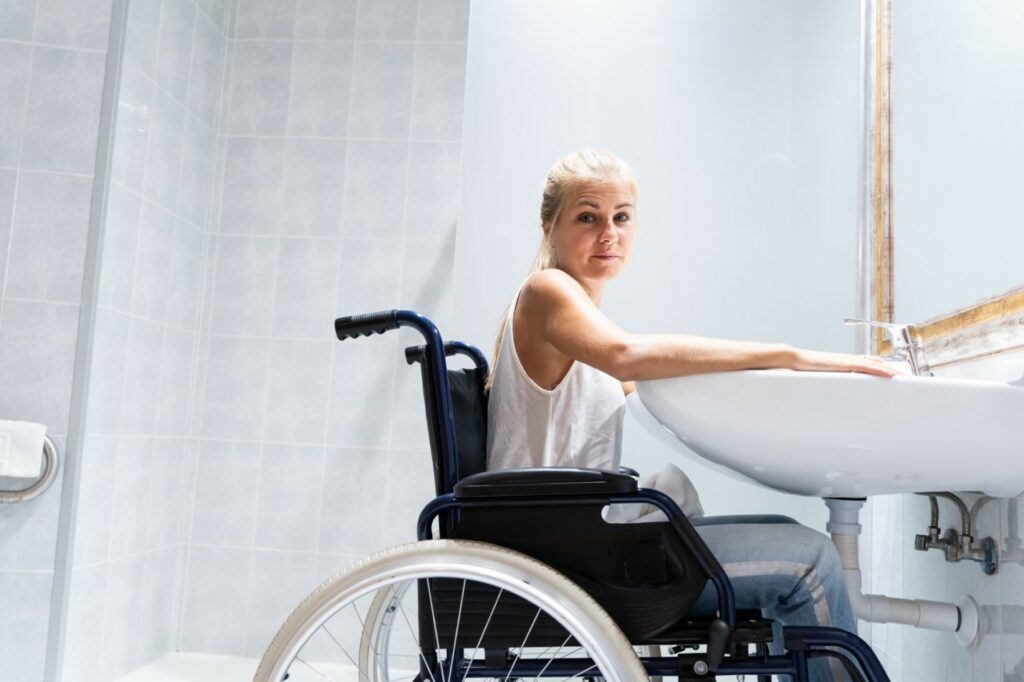Public bathrooms are essential to our daily lives, providing convenience when we’re on the go. However, for individuals with disabilities, seniors with limited mobility, or anyone facing physical limitations, navigating public bathrooms can be a daunting and frustrating experience. The lack of accessibility can make simple tasks like using the restroom a complex and potentially embarrassing ordeal.
As a business owner, you are responsible for getting familiar with the challenges people encounter when using public bathrooms and following ADA guidelines to offer practical solutions to eliminate these obstacles.
Clear Signage and Wayfinding
One of the most common challenges individuals face when using public bathrooms is finding them in the first place. Clear and concise signage is the key to solving this issue. Signs should indicate the restrooms’ location and provide information about their accessibility features. Large, easily readable fonts, symbols, and tactile indicators for people with visual impairments are essential to inclusive signage.
Proper wayfinding is equally important. Ensure that the path to the restroom is free from obstacles and provides enough space for wheelchair users to maneuver comfortably. Adequate lighting in hallways and corridors leading to bathrooms is also essential for people with low vision.
Adequate Space and Layout
Once inside the restroom, there must be enough space to accommodate various mobility devices and assistance animals. This includes widening pathways, providing turning circles, and ensuring that stalls and sinks are wheelchair accessible. Additionally, layout design should consider the needs of caregivers assisting individuals with disabilities, offering ample space for support.
To make restrooms more user-friendly, avoid cluttering the space with unnecessary fixtures and provide clear pathways to essential facilities such as sinks, changing tables, and accessible stalls. For bathrooms that include a shower, such as those located in nursing homes or hotels, it’s essential to be strategic about the shower placement.
Public bathrooms with showers must have an ADA compliant shower, so you may want to consider installing the largest ADA Roll in Shower available to allow users to navigate the space and comfortably use the shower seamlessly. A roll-in barrier-free corner shower will enable individuals with limited mobility to enter the shower stall and bathe independently and comfortably.
Accessible Fixtures and Amenities
Toilets, sinks, hand dryers, and other fixtures should be carefully chosen to ensure they are accessible to a wide range of users. Installing grab bars near toilets and shower areas, lowering sink heights for wheelchair users, and incorporating features like touchless faucets can significantly improve accessibility. When installing toilets and grab bars, it’s important that you follow ADA requirements to ensure you are following legal guidelines.
It’s also important to consider amenities for different needs. For instance, baby-changing stations should be available in men’s and women’s restrooms, and adult-sized changing tables should be provided for individuals with disabilities who require assistance.
Regular Maintenance and Cleanliness
Maintaining restroom accessibility is an ongoing task. Regular checks and maintenance are essential to ensure that fixtures and equipment remain functional and safe. This includes inspecting grab bars for stability, ensuring automatic door openers work correctly, and keeping floors dry and clean to prevent slips and falls.
A clean and well-maintained bathroom is not only more accessible but also more inviting for all users. Regular cleaning schedules and the availability of cleaning supplies for users to maintain hygiene are essential aspects of restroom upkeep.
